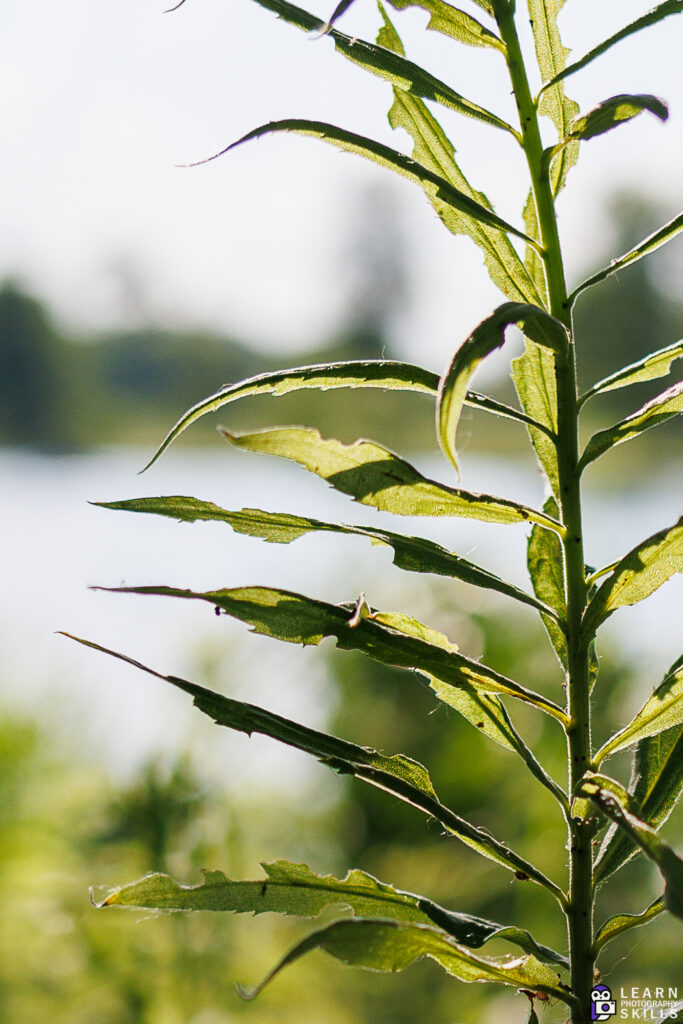This post contains affiliate links.
I was lucky enough to receive this lens earlier than expected so I thought I would put an early review up to casually discuss how this lens performs.
First thing I noticed when I got the package was how light it was. For a second I was wondering if there was a lens in there at all. Once I got the package open I found a little box containing a 28mm f/2.8 STM located within. The picture on the outside of the box proved that there was indeed a very thin and light pancake lens contained inside.
The lens comes wrapped in plastic that is wrapped in bubble wrap. For something this small it’s all that is really required to keep it safe in transit.

After unwrapping the lens I looked at it carefully… the first thing I noticed was that the front of the lens was different from any FF lens I’ve ever used. The question was, where was the glass??? Turns out that there isn’t much glass on the front. While it has a 55mm front filter thread, the actual front lens is smaller than a dime. In addition to that, it is also convex so it curves inward rather than outward. Since the front element is small and recessed it’s probably safe to have on camera and then stick in a jacket pocket.
The main draw with this lens is the fact that it is small, and it looks different which is good if you’re trying to avoid being understood as a photographer. It absolutely looks like a point-n-shoot when mounted on the R5. If it weren’t for the word “Canon” written boldly on the front of the camera, little else is there to give away that this combo can actually produce some very high resolution photographs!
Canon also gave it a special super thin front focusing ring. Though it is thin and located at the very front of the lens, it’s easy to use in practice. And you needn’t worry too much about getting a finger in the way of your pictures as the actual lens element is a lot smaller than the focusing ring.
The weight of the lens is also quite low being advertised as 120 grams. It’s just about the same weight as the basic RF to EF adapter.
While all this adds up to a small and lightweight lens, can I just say that it looks kind of overly cheap? Aesthetically I hate the tiny front element, and I don’t like that the lens filter isn’t the full width of the front of the lens. It actually screws in just inside the full width of the lens which makes for a dopey look with a filter attached.


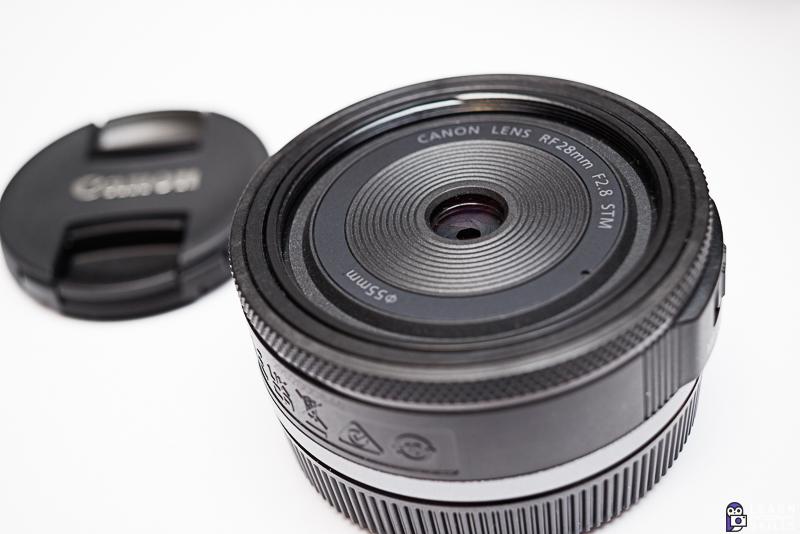
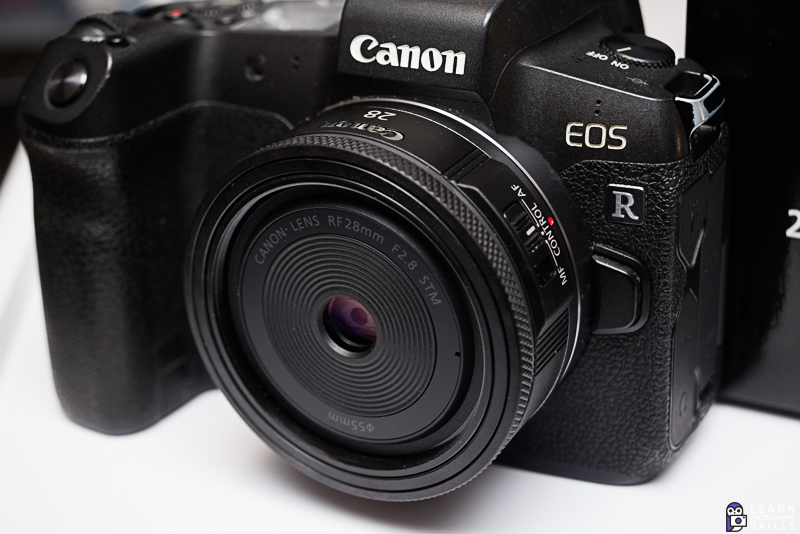
Having taken note of the appearance of this lens, I stuck it on my R5 and went out to take some pictures.
One thing I noticed immediately was that the barrel extends out when the camera is powered on. I always hate it when lenses do this and it’s weird to see a prime lens do this. If you make the mistake of turning this on while something is obstructing the lens from extending, you’ll hear a lot of nasty sounding clicking noises. No idea if that is damage occurring or if it’s just clicking as if to say “I’m stuck, help!”.
I don’t want to harp on this behavior too much but I just don’t like this motorized barrel extending behavior on a FF camera lens. Sure, it makes sense on a compact point & shoot camera but the amount of space saved by doing this is so tiny relative to the size of a typical FF camera that I feel it’s simply another thing that can break or go wrong with the lens. I can imagine that many people will NOT turn the camera off when sticking it back in a pocket and the fact that this rather fragile sounding mechanism could be accidentally impacted is a consideration to make.
I haven’t tested the barrel extension extensively for durability. I did hold the barrel in to stop it from extending while powering on the camera a couple times to check what happened. As I stated it simply starts clicking and when it’s released it extends out to where it’s supposed to. I think we can assume the lens has been designed to work this way but it still worries me a little for long term durability.
First up on my list was the focus speed, was the STM motor going to be good? And the answer is, yep, the STM motor focuses quickly and accurately. I had no problem getting the camera to focus on just about anything I wanted to. Whether it was up close or far away it snapped into focus.
I was pleased with the close focusing performance of the lens, it got focus and is sharp right up to MFD. No issues there to speak of. It’s a fun lens to use close up even if it can only get to .17x magnification. It gets nice background blur too which helps add some wow factor to everyday images. The MFD of the lens is only 9.1 inches which is closer than you’d want to get to a person with a camera most of the time.
What can I say about this photo other than it’s fantastic? This is straight out of camera too. There’s not a wrong pixel to be seen anywhere in the frame.
My first impressions of the image quality were positive to be sure.
The bokeh on this lens is really uniform and consistent from edge to edge. Generally speaking that is a good thing but not everyone will agree. There are always those who call this look “clinical” and it certainly is a bit clinical. One might even call it boring. There’s no swirl, shading, or other optical phenomenon to point to really. It’s just blurry in the background.
Did I mention this lens is pretty sharp? Even at f/2.8 it’s sharp enough to crop in substantially. I think the resolution of the lens impressed me the most about it. I wasn’t expecting this lens to fully saturate the sensor of the R5 but it does get surprisingly close to doing that.
I also gave this lens a chance to show what it can do with some landscape images. The results with landscapes were nice. With all corrections on there was very little corner shading, perhaps none, and also very little if any distortion evident. Oddly with this lens there is no option to turn off the distortion correction in camera. With shading corrections turned off there is some shading in an unusual rectangular pattern.

While it is sharp edge to edge wide open, the focal plane is curved towards the camera at the edges. The end result is that it’s a little soft at the edges at the horizon when shot at f/2.8. But, this is fully fixed by stopping down to f/5.6. Having to shoot at f/5.6 is pretty much perfect for landscape photography but if you’re hoping to use this for astro-photography it might cause the edges of your image to be a little blurry at f/2.8.
Once it is stopped down it was pretty cool because it will get everything in the frame sharp from whatever is close up on the ground at the bottom of the frame all the way out to the horizon. An interesting capability that happens at just f/5.6.

Things like CA and purple fringing were barely evident unless there was a very strong backlight such as the sun or areas of the sky near the sun. Flares are also well controlled for the most part, although some flares were evident when the sun was positioned in the central area of the frame.
One aberration it has that I don’t like is veiling flare with a strong light source near anything dark. It’s not often noticeable in daylight but I did notice a loss of contrast in some areas when framing shots with strong light sources in or near the edge of the frame.
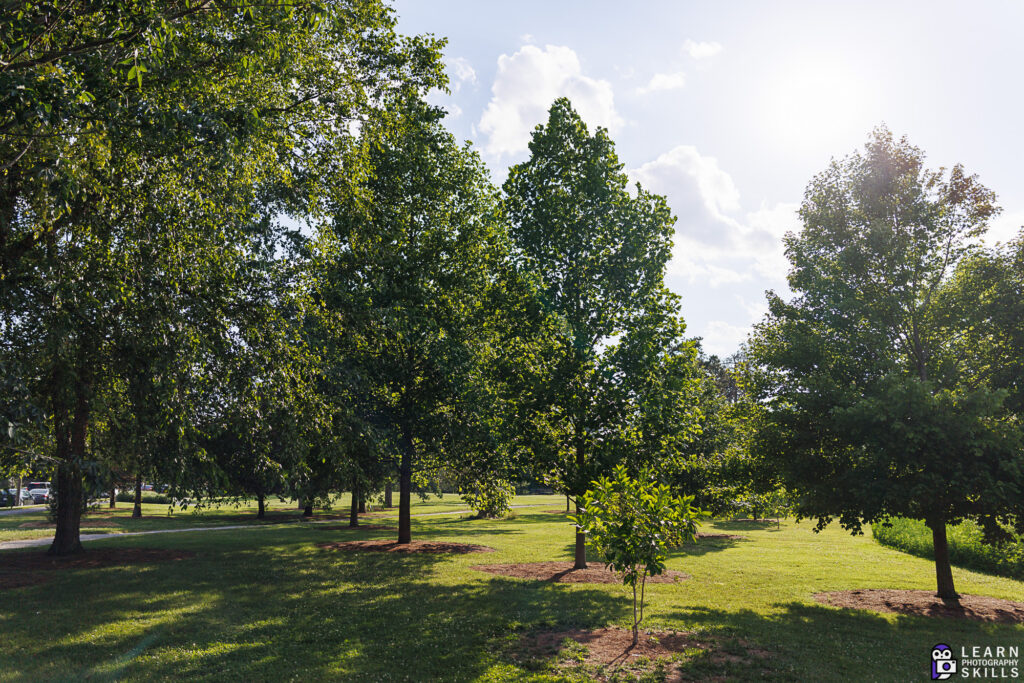
Veiling flare like this is easy to correct if you’re familiar with Lightroom, and if you just don’t want to deal with it all, simply frame the image differently. This image shows some loss of contrast and slight discoloration in the leaves (all should be green) due to subtle flares that are evident near the light source in this image.
A close up view of the affected area:
This is like the accidental photographer’s lens. I can see someone buying this, knowing very little about the technicalities of photography, and taking a lot of ridiculously nice photos with it.

If you’re willing to shoot this lens at f/4 it will deliver sharp images of things you may encounter on walks such as this giant deer sculpture by TONY TASSET in Laumeier Sculpture Park near St. Louis Missouri.
I think the premise of this lens was successful. It is a pancake lens. It is lightweight. It is designed to be stuck in a pocket and survive the ordeal. All for the low price of $299. Canon made a lot of smart decisions with this lens. Considering the goals I think they had for the design the lens performs up to expectations. It’s the kind of thing where you leave it on your R10 or your RP stuck in the side pocket of your backpack while hiking, then whip it out for a scenic shot without needing to worry about a single thing. You get 75% of what a full size lens gives while cutting out 75% of the bulk.
If you’re looking for the best size/performance compromise then this is the lens to get on RF mount.
Simplified Conclusion
Things I Like about the RF 28mm STM
- Size and weight make it easy to carry anywhere.
- Sharp pictures.
- Good closeup to the subject.
- Fair price.
- Snappy & accurate focus acquisition.
- It’s fun to use!
- Easy to keep in a pocket and doesn’t look like a “professional” camera lens.
Things I don’t like about the RF 28mm STM
- When camera powers on, barrel extends, regardless of what is in front of the camera.
- Barrel moves in and out when focusing near and far.
- Slightly blue tinge to many images and a veiling haze appearing around moderately bright areas of the image
- Some odd flares with light source directly in frame.
- A somewhat dopey looking overall design.
- With a UV filter attached it looks even sillier.
RF 28mm Sample Gallery








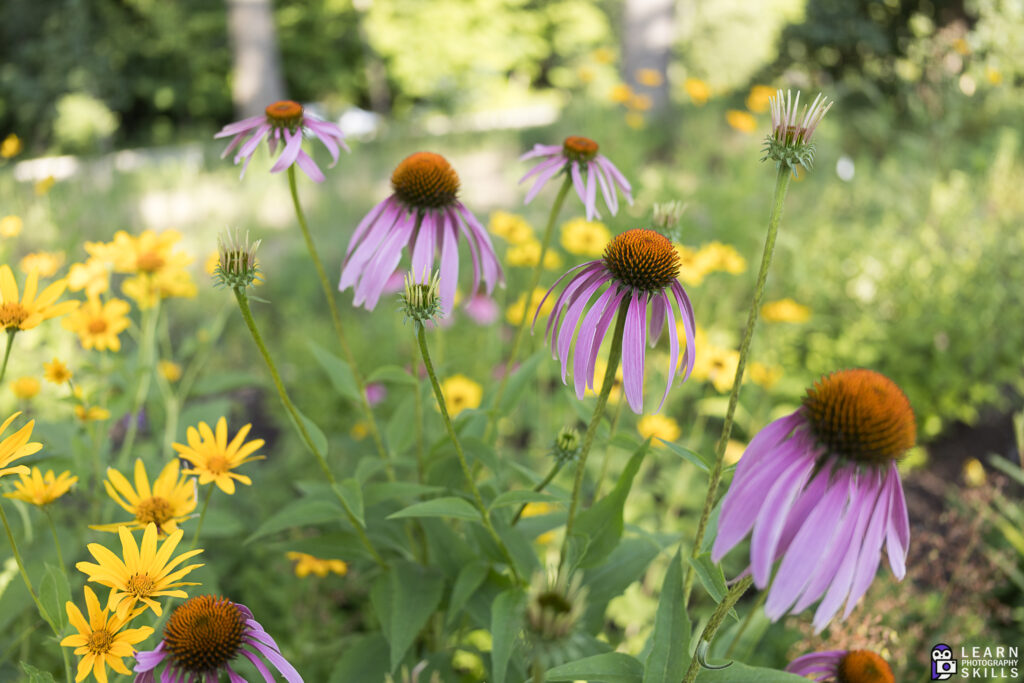

Rating

3.5 out of 5 Stars
If you liked this lens review consider supporting LPS by purchasing at Amazon.com via this link:





